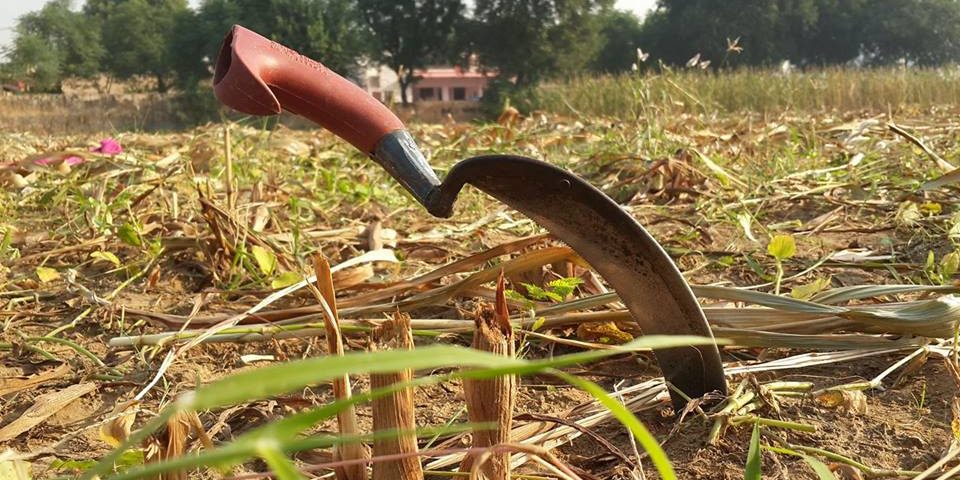High on English, Low on Hindi, Nothing on Farmers’ Income

Vegetable map of the world
February 2, 2018
उ०प्र० सरकार ने शुरू कि ‘किसान स्कूल ’ नामक योजना
February 5, 2018Nirmesh Singh & Shakti Sharan
New Delhi | 02 Feb 2018
Farmers have compelled Modi government to think of them as a political constituency. The Budget 2018 reflects this tone. This is a significant development. India witnessed intensive farmers’ protests in Delhi and in other states over the last one year. The farmers unrest has caused political setbacks to BJP in Gujarat, local bodies elections in rural Uttar Pradesh and three by polls in Rajasthan (where farmers protest was quite intense). Therefore, the Budget is laden with announcements keeping 2019 general elections in mind, as this is the last budget of Modi government but no mention of action on farmers’ major demand of farmers income commission.
Doubling the farmers’ income by 2022 has been the major promise and goal of Modi Government. But no one knows what would this income be? Government has eluded this figure in this budget also.
The current average monthly income of farmers is than Rs 4000 and out of this they also have to spend for seeds, fertilizer, irrigation, etc. If this income gets doubled in 2022, it would mean only Rs 8000 per month. Are we trying to achieve this figure of Rs 8000 per month? Government must state clearly what the average monthly income would be in 2022.
Central Statistics Office (CSO) has pegged farm and allied sector growth at 2.1 per cent for 2017-18, much lower than 4.9 per cent achieved in the 2016-17. The Economic Survey of India has pegged agri growth at 4.1 per cent in the current fiscal.
Even to achieve this unmeaningful figure of Rs 8000 per month, former Prime Minister Manmohan Singh have said today that it is not possible to double farmers’ income by 2022 until the agricultural growth is 12 percent.
Ashok Dalwai’s committee formed to look into doubling farmers’ income said that Rs 6.4 lakh crore investment was needed for this. But the allocation has only increased by Rs 4,845 crore.
Government has also announced the new Minimum Support Price (MSP) as 1.5 times the crop production cost. Unanswered question is what is the government’s definition of ‘production cost’. Finance Minister Jaitley has not clarified which of the two formulae for new MSP would be adopted. Is it C2 or A2+FL?
C2 is a more comprehensive measure of farmer’s production costs and includes family labour, working capital and imputed rental value of land. These are not the part of A2+FL that includes input costs and imputed value of only family labour.
Inspite of the complaints that farmers have to sell their produce forcibly (under distress) below MSP to private players, Government has not been able to ensure MSP for farmers when prices crash. There is a need of stringent law to curb any purchase below MSP by a private player. The allocation for the Market Intervention & Price Support Scheme has also declined from Rs 950 crores to a meagre Rs 200 crores.
The allocation for agri credit should have been higher. It has been fixed at Rs 11 lakh crores when the agriculture credit disbursed in 2016-17 itself was 10.66 lakh crores.
Despite the warning by Economic Survey that agri income may fall by up to 25 percent because climate change will hit crop yields, there has been a marginal decline in disaster relief allocation to states as compared to last year and for rapid expansion of efficient micro-irrigation, only a meagre increase of 600 crores.
The only welcome announcements are that the tenant farmers would also be made eligible for farm loans and 22000 new markets would be developed.
The government has lost time, precious four years to put agri growth on track and to draft a road map for doubling farmers’ income.


